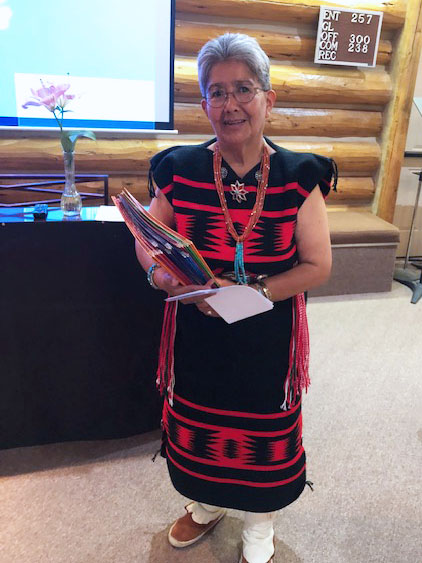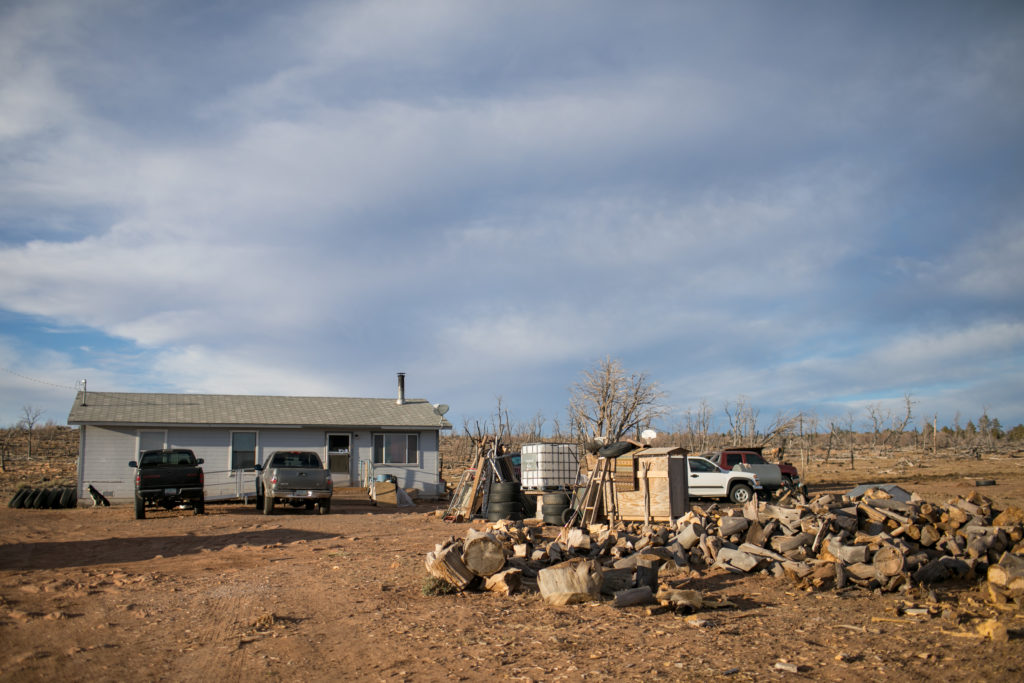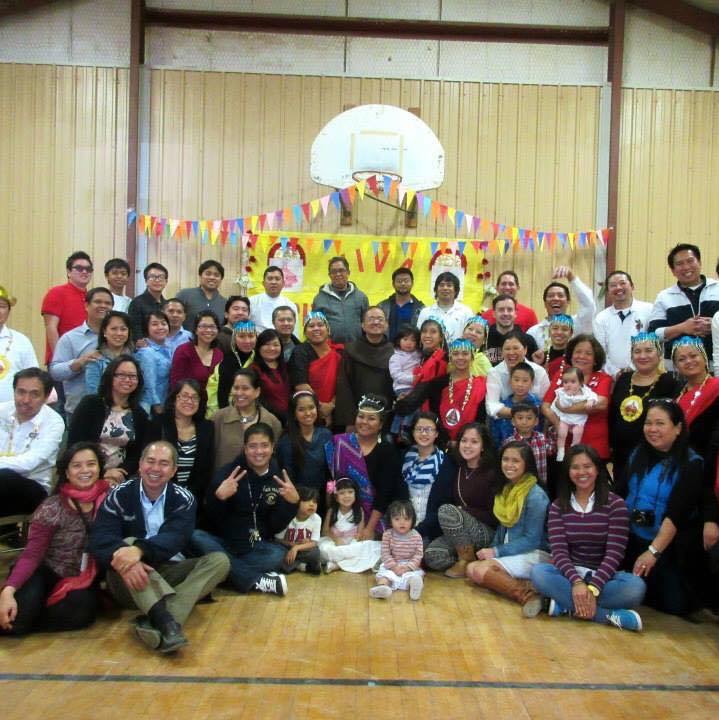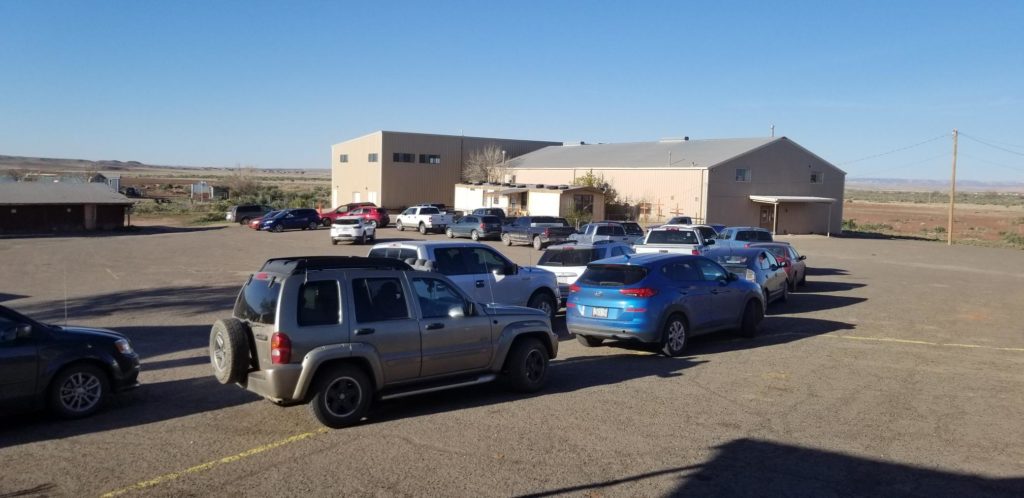The largest Native American reservation in the United States is Navajo Nation. It covers northeastern Arizona and northwestern New Mexico, as well as parts of Utah. The boundaries of the Diocese of Gallup mirror this multi-state territory. Navajo people worship in tiny mission churches with devoted and supportive faith leaders and communities—many of whom are supported by Catholic Extension Society.
This includes Our Lady of Fatima, a church built in the traditional Navajo hogan style in the heart of the reservation in Chinle, Arizona. Here, parishioners gather to celebrate their Catholic faith grounded in the context of their Navajo culture and traditions. In their midst is Sister Theresa Chato, a Navajo woman and member of the Sisters of the Blessed Sacrament.
“I’m so happy to be in Chinle, ministering among my own people,” she said.

Her work in the Diocese of Gallup, supported by Catholic Extension Society, is essential. Although there is great beauty in this landscape, there is also great need. Small family clusters are spread out over vast distances among the arid deserts, mesas, plateaus and low mountains—making connections to the power grid and water supply difficult. About 30 percent of Navajo households lack electricity or running water. People there must travel great distances to get water and firewood to heat homes.

In these circumstances, hope, love and faith shine bright—enlivened by the likes of women such as Sister Theresa. As the director of religious education, Sister Theresa ministers to families and elders in the community. She upholds parish life, volunteers at the parish food bank and attends to her parishioners in their spiritual and personal needs.
Women as sacred
Her leadership position within the parish aligns with the traditional matriarchal Navajo society—wherein women are the guiders of the people among the more than 100 different clans.
“Navajo clans are matrilineal. So, our mother’s clan is the most important one,” said Sister Theresa. “Our clans tell other Navajos how we are related to one another. We are not just individual persons with our own identity.”

Mothers and grandmothers, especially, represent a very special role in society. “They are the ones who also share the various traditions and history of the people. They set an example—what it means to care for one another,” Sister Theresa said. “They really are the center of the family, the keepers of wisdom and traditional teachings. They are the example of what is best in the Navajo culture. They pass it on to their grandchildren—their granddaughters as well as their grandsons.”
Despite their sacred position in society, Navajo women have endured many hardships over the years. In 1864, the Navajo were forced from their homeland in “The Long Walk.” Thousands were made to march up to 450 miles to a desolate eastern New Mexico camp called Bosque Redondo. Many died as a result of the inhospitable and unsanitary conditions of the camp.
“Women were the ones who wanted to return back to their homeland,” Sister Theresa said. In 1868, the government allowed the Navajo to reclaim their lands. But when they returned, Christian missionaries cruelly eradicated the sacred leadership of women in the homes and government. As a result, today there is extremely low female representation on the Navajo Nation Council.
The impact of poverty and addictions has further violated the traditional role of Navajo women as well. Although they are considered sacred, Navajo women are disproportionately victimized by abuse.
An enduring hope in the Diocese of Gallup
Despite these immense challenges of the past and present, Sister Theresa shares a great hope with her people for a brighter future for women and families. In Chinle, her parishioners draw from their Catholic faith for guidance and strength.
She is optimistic in her current ministry:
What gives me hope is the people.”
Even in the face of the difficult reality that Navajo women face today, they were the ones who kept families together during the pandemic. COVID-19 devastated the Navajo Nation in the Diocese of Gallup, at one point reaching the highest rates per capita in the country. During this time, Sister Theresa’s ministry reached many mothers and grandmothers, who “became mini-teachers,” making sure the children continued their education.
Sister Theresa also tirelessly responded to the incredible challenge of ministering to a population in crisis and with scarce resources and spread across vast distances. She set up Zoom classes to teach children religious education on Sundays, and reached out to parishioners through email and phone calls to check in with them.
Catholic Extension Society remained in steadfast solidarity with the Navajo during this crisis, supporting faith leaders and sending emergency funding to help them distribute food and supplies to the community. Sister Theresa and parishioners put together food and “prayer baskets” for those who lost loved ones. Many waited in line for necessities.

The effects of the pandemic may last for years, but through the life-giving ministry of faith leaders such as Sister Theresa, and through the resilience of the people, hope and faith will persevere in the Diocese of Gallup.
“They are the ones that have shown me that in spite of challenges and struggles, there is always hope,” she said. “That hope of who we are as God’s people. The hope that we are as Diné, Navajo people, taking nothing for granted.”


